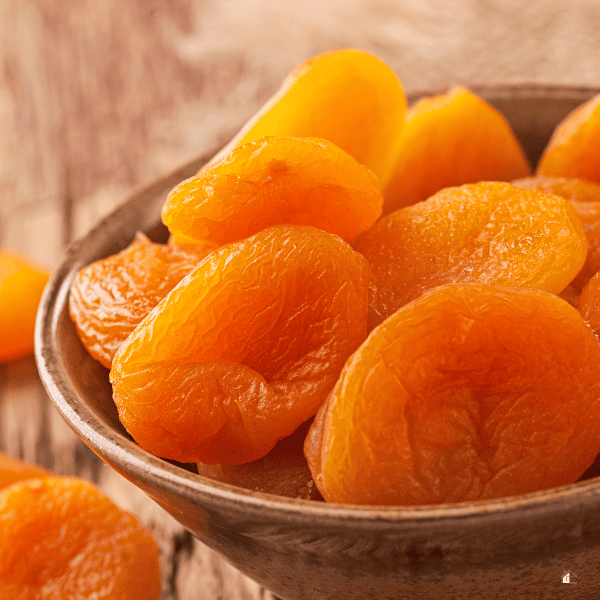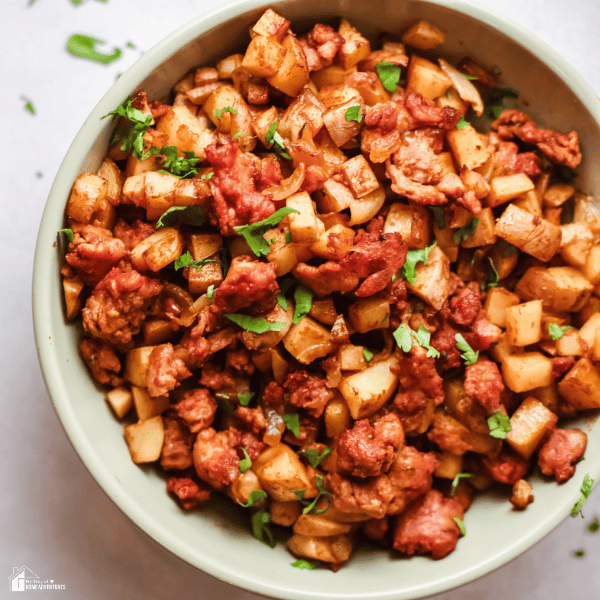What Is The Best Substitute For Cranberries?
This post may contain affiliate links which might earn us money. Please read my Disclosure and Privacy policies hereCranberries are widely loved for their unique tart taste and vibrant red color. They are commonly used in various dishes, such as sauces, desserts, and beverages. However, there may be instances where cranberries are not readily available or desired.
In such cases, having alternative options can be beneficial. This article will explore what cranberries are and why substitutes can be useful in cooking and baking.

What are Cranberries and Why Do We Need Substitutes?
Cranberries are small, acidic berries native to North America. They are known for their tangy flavor and are often associated with the holiday season. These berries are highly nutritious and packed with antioxidants and vitamins.
The need for cranberry substitutes may arise due to several reasons. First, cranberries may not be easily accessible in certain regions or during off-seasons. Furthermore, some individuals may have allergies or sensitivities to cranberries, making them seek alternatives. Lastly, there may simply be a preference for different flavors or textures in a recipe.
Using substitutes can help maintain the desired taste and texture of a dish while still providing similar health benefits. It allows for versatility in cooking and baking while accommodating personal preferences and dietary restrictions.

Best Substitutes for Cranberries
When searching for cranberry substitutes, it is crucial to consider the specific purpose of cranberries in a recipe. Here are some excellent alternatives to consider:
- Pomegranate Seeds: Pomegranate seeds provide a similar burst of tartness and vibrant color. Their slightly sweet and tangy flavor makes them an excellent replacement in salads, sauces, and cocktails.
- Raspberries: Raspberries offer a similar level of tartness and juiciness to cranberries. They can add a tangy twist in sauces, jams, and baked goods.
- Cherries: For a sweeter option, cherries can be used as a substitute. They have a natural sweetness that balances out the tartness of cranberries. Cherries work well in desserts, sauces, and drinks.
- Grapes: Grapes can lend a mild sweetness and juiciness to dishes, making them a suitable alternative for cranberries. They can be used in salads, sauces, and even infused in drinks.
- Apples: Apples can provide a hint of tartness and a slightly sweet flavor, making them a versatile substitute. They work well in sauces, chutneys, and baked goods.
- Dried Fruit: Dried fruits like raisins, currants, or dried cherries can be used as a substitute for cranberries in baking. They add a natural sweetness and chewiness to recipes.
When using substitutes, it's essential to adjust the ingredients and quantities accordingly to ensure a balanced flavor profile. Experimentation and personal taste preferences can also guide the choice of substitute.
Cranberry substitutes offer flexibility and options in cooking and baking. Pomegranate seeds, raspberries, cherries, grapes, apples, and dried fruit are excellent alternatives. These substitutes can mimic the tartness, sweetness, and vibrant colors that cranberries bring to recipes, providing a delightful culinary experience.
You might enjoy these posts:
- 5-Ingredient Cranberry Sauce with Orange Juice: A Family Favorite
- Cranberry Cracker Bites
- Cranberry Raisin Monkey Bread Recipe

Dried Cranberries
The closest substitute for fresh cranberries
Dried cranberries are the closest option when finding the best substitute for fresh cranberries. Dried cranberries offer a similar tartness and flavor profile as their new counterparts, making them an excellent recipe alternative.
The drying process intensifies the sweetness and concentrates the tangy taste of cranberries, resulting in a chewy and flavorful ingredient. With their vibrant red color and slightly tart flavor, dried cranberries can seamlessly replace fresh cranberries in a variety of dishes.
Tartness and versatility in baking and cooking
Dried cranberries bring tartness and versatility to both baking and cooking. In baking, they can be added to cookies, muffins, bread, and granola bars for a burst of flavor. The chewy texture of dried cranberries adds a delightful contrast to the softness of baked goods. They can also be rehydrated before use to retain some of the moisture they have when fresh.
In cooking, dried cranberries are commonly used in salads, pilafs, stuffing, and savory dishes. Their tartness adds a pleasant balance to savory components and can elevate the overall flavor profile of a dish. Dried cranberries can also be used in sauces and glazes, offering a sweet and tangy element that complements meats and vegetables.
Additionally, dried cranberries are a convenient pantry staple that can be easily stored and used year-round. Unlike seasonal fresh cranberries, dried cranberries are available anytime, ensuring you can enjoy their tartness whenever desired.
They are suitable for a wide range of recipes. Whether baking sweet treats or adding a tangy twist to savory dishes, dried cranberries offer versatility and convenience. Don't hesitate to reach for this versatile ingredient when fresh cranberries are not an option.

Cranberry Juice
A liquid alternative for cranberry flavor
When fresh cranberries are not available or desired, cranberry juice is an excellent substitute for capturing cranberries' distinct tartness and refreshing flavor. Made by extracting the juice from cranberries and often mixed with other fruit juices for added sweetness, cranberry juice provides a liquid alternative that can be used in various recipes.
Cranberry juice offers a tangy and slightly sweet taste that can be enjoyed on its own or used as an ingredient in beverages, sauces, and marinades. Its vibrant red color adds visual appeal to any dish, making it an attractive choice for culinary and aesthetic purposes.
Uses in beverages, sauces, and marinades
In beverages, cranberry juice can be mixed with sparkling water, soda, or other fruit juices to create refreshing and flavorful drinks. It can also be added to cocktails or mocktails, giving them a tart and tangy twist. Cranberry juice pairs well with citrus flavors, making it a versatile ingredient for creating unique and tasty beverages.
Cranberry juice is also commonly used in sauces and marinades. Its acidity and sweetness complement a range of savory dishes, such as poultry, pork, and fish. It can be used as a base for salad dressings, glazes, and reductions, adding a distinctive cranberry flavor to enhance the overall taste of the dish.
Cranberry juice is known for its potential health benefits, as it is rich in antioxidants and vitamin C. It has been linked to promoting urinary tract health and preventing certain infections. Incorporating cranberry juice into your diet can be a delicious way to reap these potential benefits.
Cranberry juice is the best substitute for fresh cranberries when their availability is limited or not preferred. It provides the distinct tartness and refreshing flavor of cranberries in a liquid form that can be used in various recipes.
From beverages to sauces and marinades, cranberry juice offers versatility and a vibrant red color that adds visual appeal to any dish. Consider incorporating cranberry juice into your culinary repertoire as a delicious and healthy alternative to fresh cranberries.

Red Currants
Similar tartness and texture to cranberries
When fresh cranberries are not available or preferred, red currants can serve as an excellent substitute in flavor and texture. Red currants have a similar tartness that can mimic the distinct tang of cranberries, making them a suitable replacement in recipes.
Red currants are small, firm berries with a slightly acidic and tangy taste. They offer a vibrant red color, similar to cranberries, which adds visual appeal to any dish. The texture of red currants is somewhat similar to cranberries as well, with a bit of firmness and juiciness.
Cooking and baking applications
Red currants can be used in a variety of cooking and baking applications to replicate the unique flavor and visual appeal of cranberries. Here are some ways to incorporate red currants as a substitute:
- Beverages: Use red currant juice or puree as a base for refreshing drinks. It can be mixed with sparkling water, soda, or other fruit juices to create flavorful and tangy beverages.
- Sauces and coulis: Red currants can be cooked down with sugar to create a tangy sauce or coulis that can be drizzled over desserts, meats, or salads. The sauce can add a burst of flavor and tang, similar to cranberry sauce.
- Baked goods: Red currants can be added to muffins, scones, pies, or tarts for a tart and vibrant burst of flavor. They can be used in place of cranberries in recipes, providing a similar taste and texture.
- Jams and jellies: Red currants can be cooked down with sugar and pectin to create delicious jams and jellies that can be spread on toast or used as a filling for pastries.
Red currants are an excellent substitute for cranberries when fresh cranberries are not available or desired. They offer a similar tartness and texture, making them suitable for various cooking and baking applications.
Whether used in beverages, sauces, baked goods, or jams, red currants can provide the distinctive flavor and visual appeal that cranberries bring to a recipe. Consider incorporating red currants into your culinary repertoire as a delicious alternative to cranberries.

Lingonberries
A Scandinavian favorite as a cranberry substitute
Lingonberries have been a staple in Scandinavian cuisine for centuries and make an excellent substitute for cranberries. These small, bright red berries have a tart flavor that closely resembles the tanginess of cranberries, making them a popular choice in various dishes.
Tartness and uses in various dishes
Lingonberries have a similar tartness to cranberries, making them a suitable replacement in recipes that call for cranberries. They add a refreshing and tangy taste to dishes while also contributing a vibrant red color. Here are some ways in which lingonberries can be utilized as a cranberry substitute:
- Sauces and relishes: Just like cranberries, lingonberries can be cooked down with sugar to create a tangy sauce or relish to accompany meat dishes or add a zing to your Thanksgiving turkey.
- Baked goods: Lingonberries can be added to a variety of baked goods such as pies, muffins, and bread. They provide a burst of tartness and color, giving your baked goods a unique twist.
- Beverages: Lingonberries can be used to infuse flavor into beverages such as cocktails, smoothies, or even homemade fruit syrups. Their tangy taste adds a refreshing and lively element to drinks.
- Jams and preserves: Lingonberries can be cooked down with sugar and pectin to create delicious jams and preserves. These can be spread on toast, used as a filling for pastries, or even enjoyed as a topping for pancakes or waffles.
In Scandinavian cuisine, lingonberries are often served alongside savory dishes such as meatballs and fish as a tart and tangy accompaniment. They can also be found in traditional desserts and pastries, adding a unique flavor profile that is reminiscent of cranberries.
Lingonberries are a fantastic substitute for cranberries, offering a similar tartness and vibrant color. Whether used in sauces, baked goods, beverages, or jams, lingonberries can bring a tangy and refreshing element to your dishes. So, next time you can't find cranberries, consider reaching for lingonberries as a delicious alternative.

Cherries
A fruity swap for cranberries
When it comes to finding a substitute for cranberries, cherries are an excellent option to consider. With their natural sweetness and versatility in recipes, cherries can provide a delightful twist to dishes that traditionally use cranberries.
Cherries offer a unique flavor profile that combines sweetness and a hint of tartness, making them a suitable alternative to the tangy taste of cranberries. These vibrant red fruits can be used in various forms, such as fresh, frozen, or dried, giving you flexibility in incorporating them into your recipes.
Sweetness and versatility in recipes
Cherries bring their natural sweetness to recipes, which can balance the tartness that cranberries typically provide. They can be used in both savory and sweet dishes, adding a burst of flavor and a beautiful pop of color.
In savory recipes, cherries can be used to make delicious sauces, relishes, or chutneys to accompany meats like roasted turkey or grilled pork. The combination of their sweetness with savory flavors creates a well-rounded and mouthwatering dish.
When it comes to sweet recipes, cherries can shine in baked goods such as pies, tarts, and cakes. They can be added as a filling or as a flavorful topping, imparting a luscious sweetness and a delightful ruby-red hue to the final creation.
Cherries also lend themselves well to beverages, whether in cocktails, smoothies, or fruit-infused water. Their natural sweetness adds depth to drinks, complementing other flavors and leaving a refreshing sensation.
When cranberries are not readily available, cherries make an excellent substitute. With their inherent sweetness and versatility in recipes, cherries can elevate your dishes, providing a delicious and unique twist.
Whether you want a fruity accompaniment to your savory meals or a vibrant addition to your desserts and beverages, cherries are a fantastic choice. So, next time you need a substitute for cranberries, turn to cherries and explore their endless possibilities.

Apricots
A surprising alternative for cranberries
When finding a substitute for cranberries, apricots might not be the first fruit that comes to mind. However, apricots offer a surprising and delicious alternative that can bring a unique twist to your recipes.
Apricots have a delicate and slightly tart flavor that can tangibly resemble cranberries. Their natural sweetness also adds a pleasant balance to dishes, making them versatile for various recipes.
Flavor profile and creative uses
Apricots have a distinctive flavor profile with hints of sweetness and tartness. This makes them a great substitute for cranberries in both sweet and savory dishes.
In sweet recipes, apricots can make jams, preserves, or compotes. Their natural sweetness enhances the flavors and adds a delightful fruity note to treats like cakes, tarts, or muffins.
For savory dishes, apricots can make delicious glazes or sauces for meats, such as roasted chicken or pork. Combining their tanginess with savory flavors creates a flavorful and mouthwatering dish.
Additionally, apricots can be used in salads or as a topping for yogurt or oatmeal. Their bright color and refreshing taste add an enticing element to these dishes.
Apricots can also be enjoyed in their dried form. Dried apricots can be used in trail mixes, granola bars, or snacks. Their chewy texture and concentrated flavor make them a convenient and healthy alternative to dried cranberries.
Apricots offer a surprising and flavorful substitute for cranberries. Their unique flavor profile, combining sweetness and tartness, makes them a versatile ingredient in sweet and savory recipes.
Whether you want to add a tangy twist to your desserts or create a flavorful glaze for your meats, apricots can be a delightful choice. So, next time you need a cranberry substitute, consider using apricots and explore their endless culinary possibilities.

Conclusion
When finding a substitute for cranberries, apricots offer a surprising and delicious alternative that can bring a unique twist to your recipes. With their delicate and slightly tart flavor, apricots provide a similar tanginess to cranberries, while their natural sweetness adds a pleasant balance to dishes. They can be used in sweet and savory recipes, making them versatile.
A comprehensive list of the best cranberry substitutes
If you're looking for alternatives to cranberries, here are some other options to consider:
- Raspberries: With their tangy and slightly sweet flavor, raspberries can be a great substitute. They work well in both sweet and savory dishes, including sauces, desserts, and salads.
- Pomegranate seeds: These juicy and tart seeds can add a burst of flavor to your dishes. Use them as a topping for salads, desserts, or even savory dishes like roasted chicken.
- Cherries: Whether fresh or dried, cherries can provide a similar tanginess to cranberries. They can be used in recipes such as sauces, pies, and chutneys.
- Red currants: These small and tart berries can be used in sauces, jams, or as a topping for desserts. They add a bright burst of flavor to your dishes.
- Plums: Plums have a tangy and sweet flavor that can work well as a cranberry substitute in both sweet and savory recipes. Use them in sauces, preserves, or even roasted meats.
Frequently Asked Questions
When substituting cranberries, it's important to consider the flavor profile and texture of the alternative ingredient. Experiment with different options to find the one that best suits your dish and personal taste preferences. Here are a few frequently asked questions about cranberry substitutes:
Can I use cranberry juice instead of fresh cranberries?
Yes, cranberry juice can be used as a substitute in some recipes. However, keep in mind that it may alter the texture and flavor of the dish, so adjust the quantities accordingly.
Can I use dried cranberries as a substitute for fresh cranberries?
Dried cranberries can be used as a substitute, especially in baked goods or salads. However, they have a sweeter and chewier texture compared to fresh cranberries, so consider this when using them in recipes.
What if I can't find any cranberry substitutes?
If you can't find any suitable substitutes, consider adjusting the recipe to accommodate the absence of cranberries. You can try using other fruits or flavorings that complement the dish.

Simple Cranberry Sauce
If you're looking for a simple cranberry sauce recipe that doesn't require a lot of ingredients or time, you've come to the right place.
This recipe is easy to follow and only takes about 15 minutes to make. Plus, it's perfect for Thanksgiving or Christmas dinner. So, let's get started!
Ingredients
- ¾ cup of orange juice, pulp-free
- ¼ cup of water
- 1 cup of sugar
- 1/8 teaspoon of cinnamon
- 12oz package of fresh cranberries, rinsed and stems removed
Instructions
- Mix water, orange juice, and sugar in a large pan and bring to a boil the water starts boiling, start adding cranberries and cinnamon and continue to let it boil for 5-7 minutes.
- Continue to stir occasionally.
- Once you see that the cranberries have opened, remove them from the heat and chill covered for about three hours. This will allow the sauce to thicken.
Nutrition Information:
Yield: 8 Serving Size: 1Amount Per Serving: Calories: 127Total Fat: 0gSaturated Fat: 0gTrans Fat: 0gUnsaturated Fat: 0gCholesterol: 0mgSodium: 2mgCarbohydrates: 33gNet Carbohydrates: 0gFiber: 2gSugar: 29gSugar Alcohols: 0gProtein: 0g
This is based on 8 servings and data provided and calculated by Nutritionixn on 8/12/2019.








